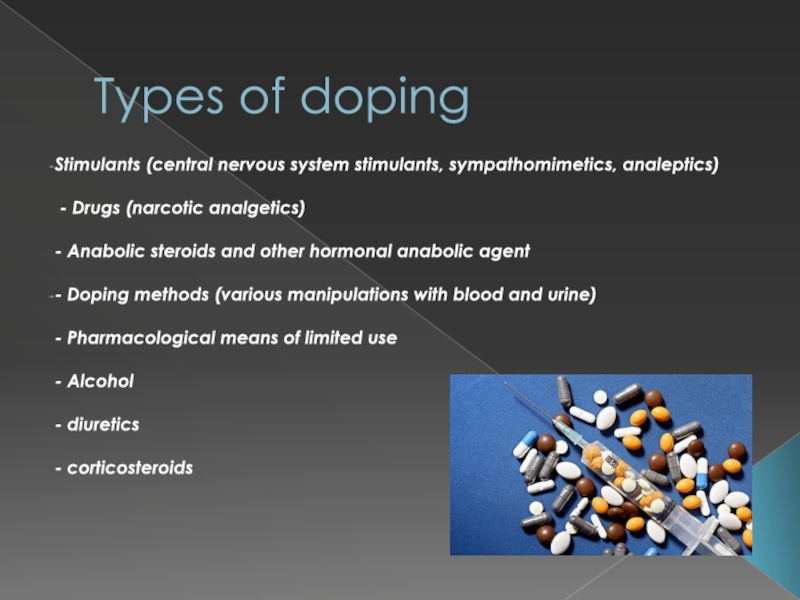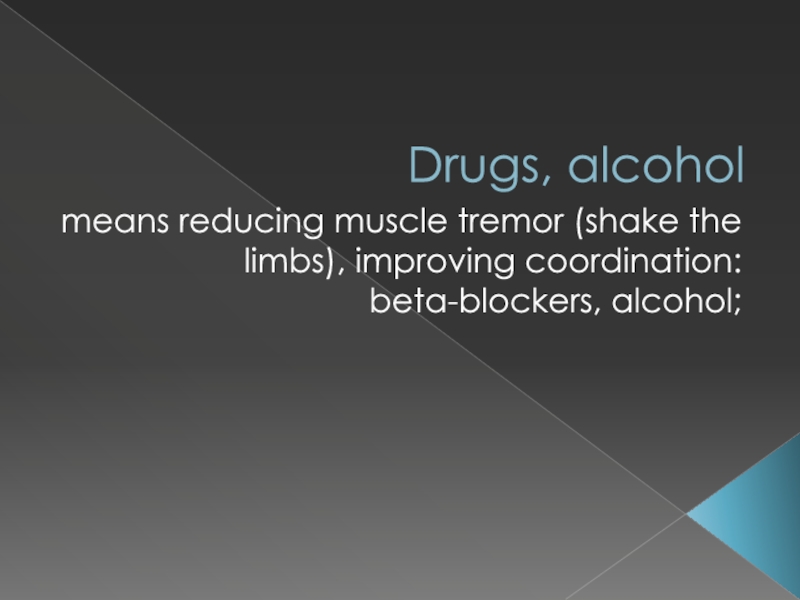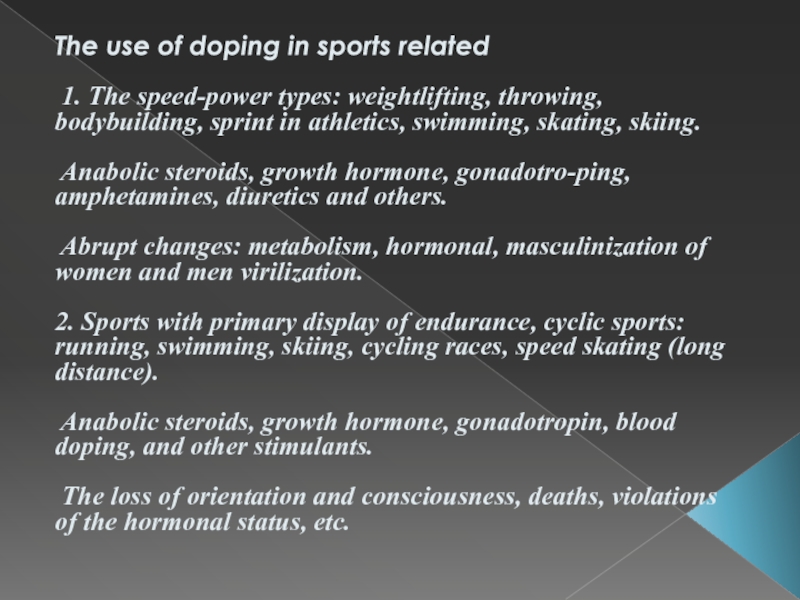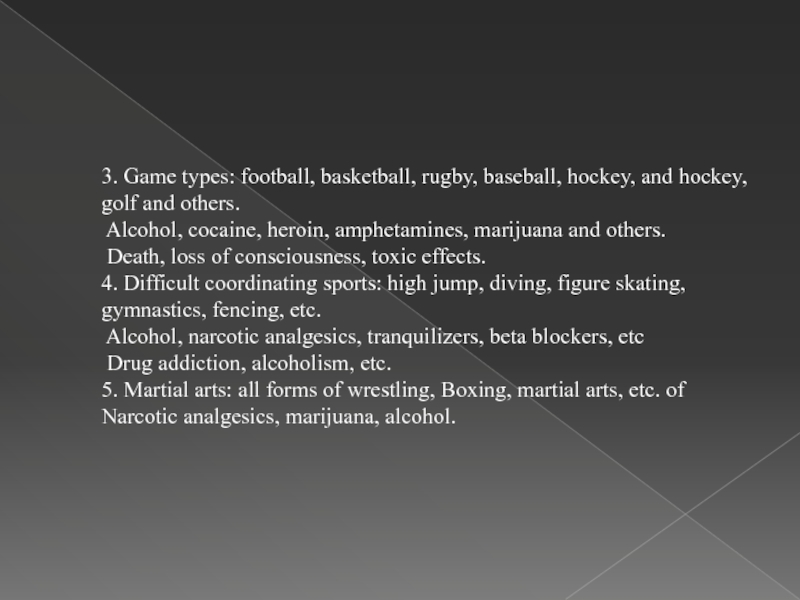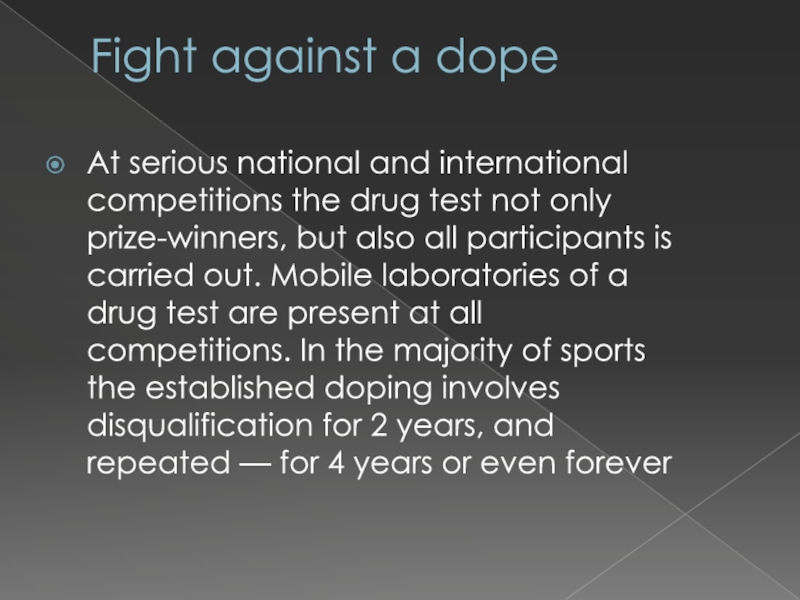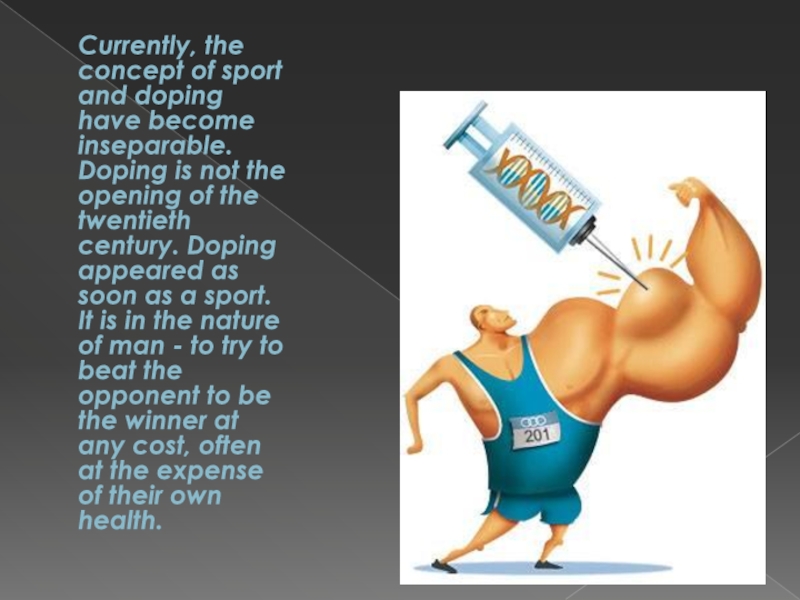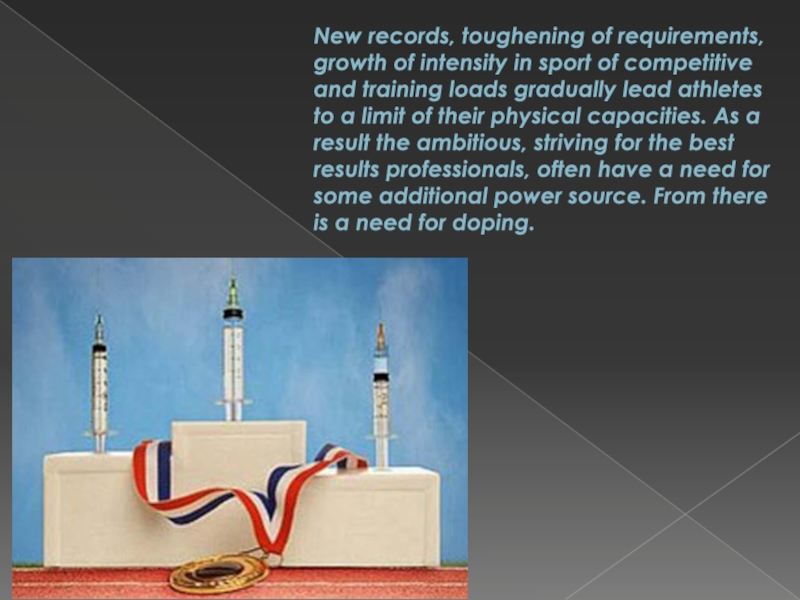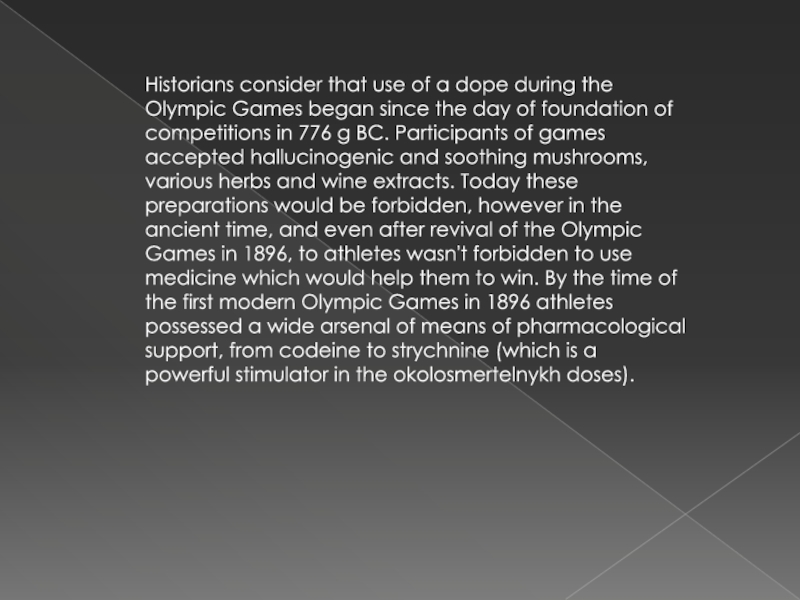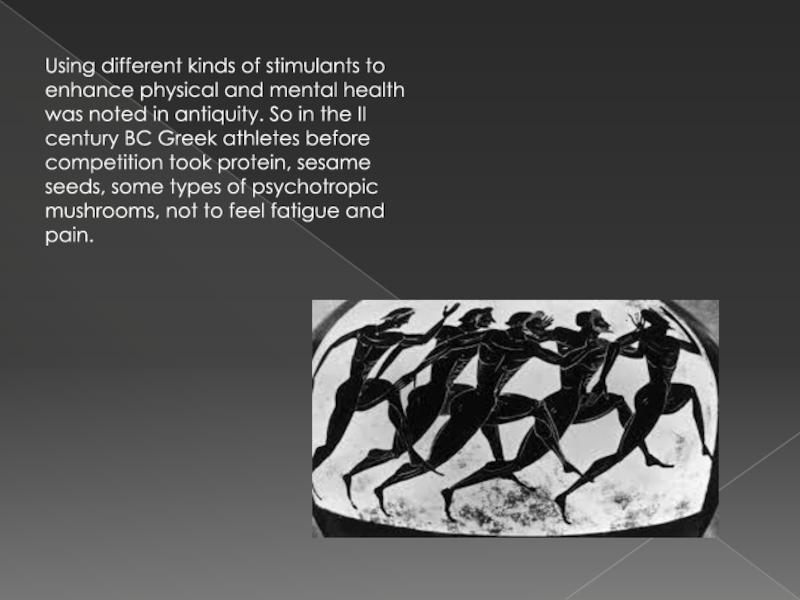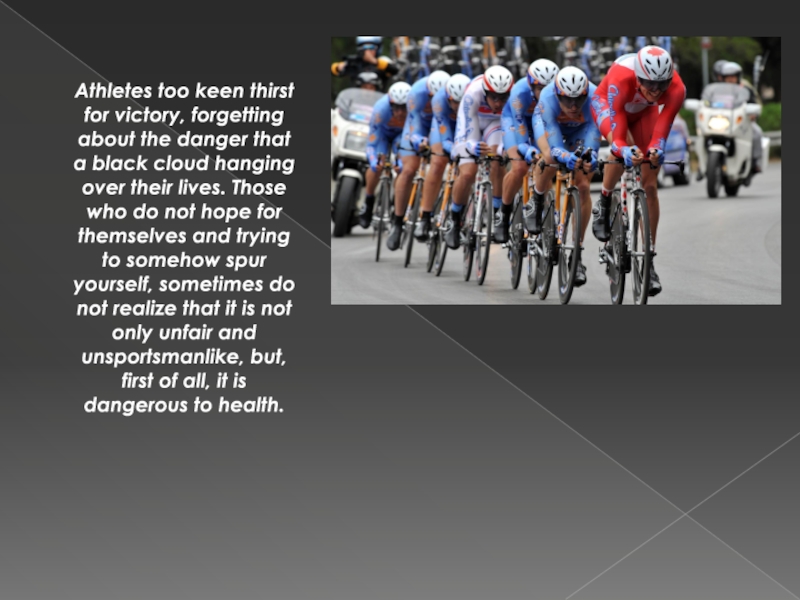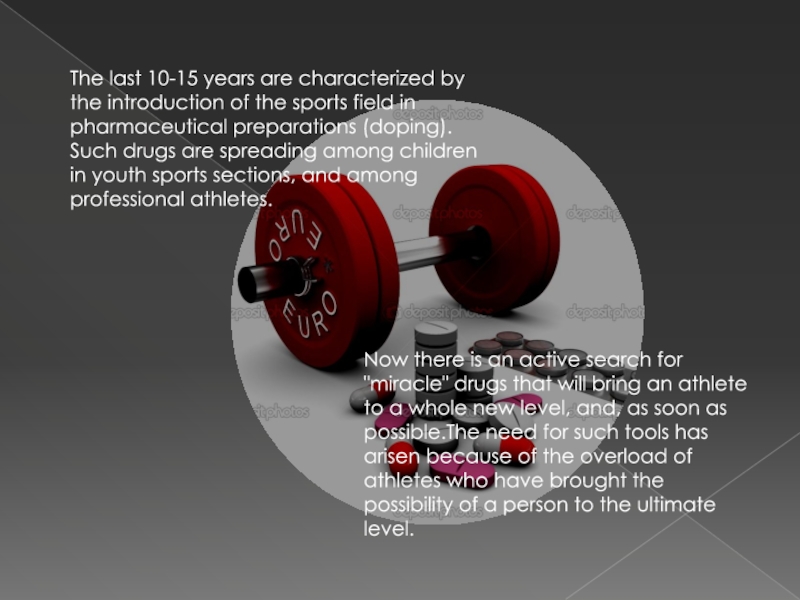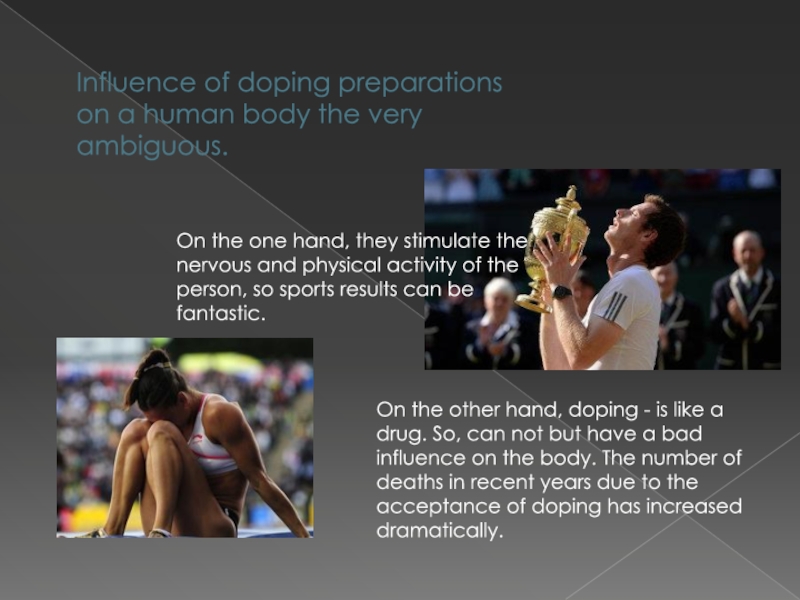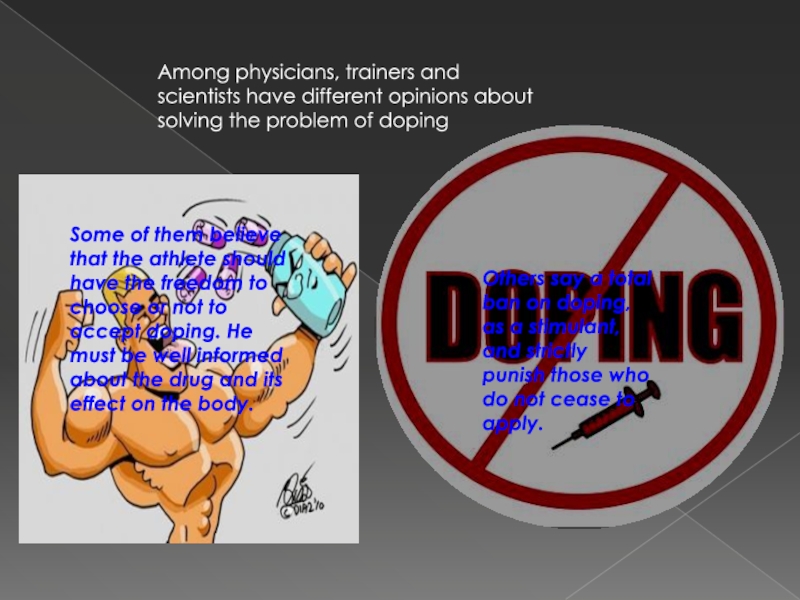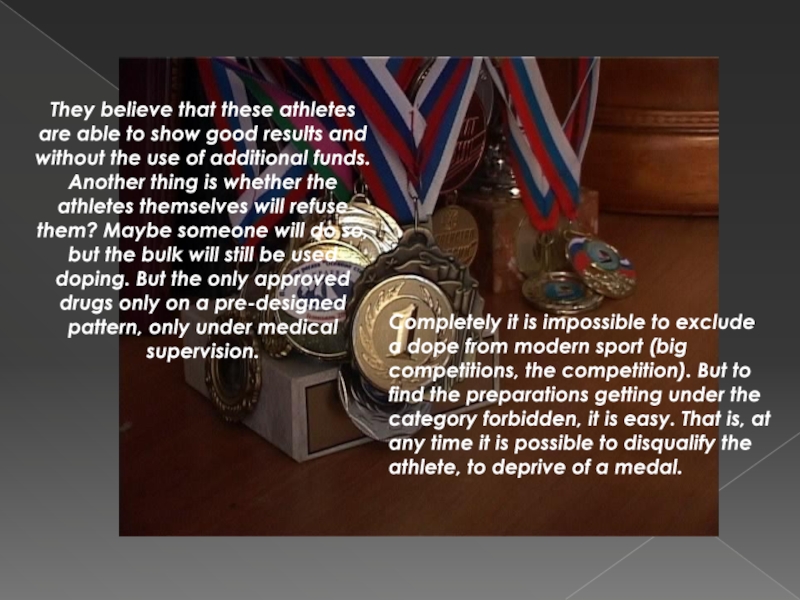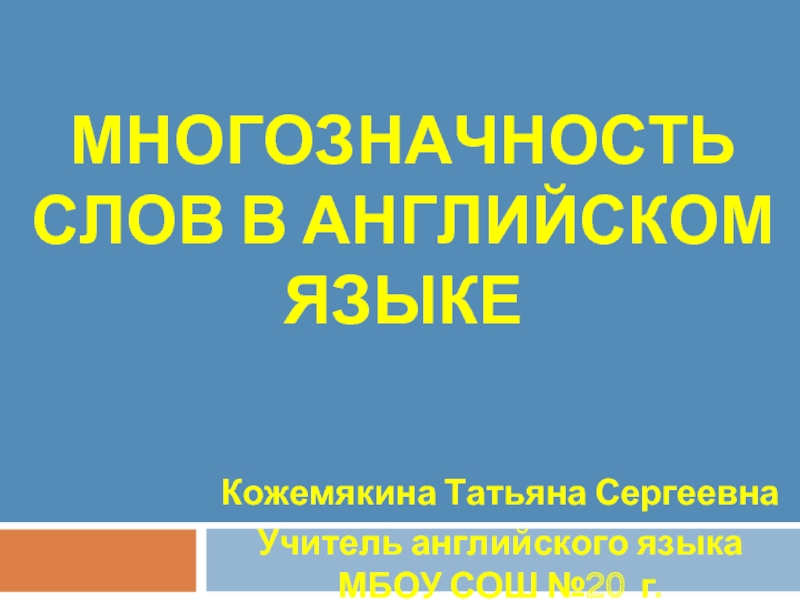- Главная
- Разное
- Дизайн
- Бизнес и предпринимательство
- Аналитика
- Образование
- Развлечения
- Красота и здоровье
- Финансы
- Государство
- Путешествия
- Спорт
- Недвижимость
- Армия
- Графика
- Культурология
- Еда и кулинария
- Лингвистика
- Английский язык
- Астрономия
- Алгебра
- Биология
- География
- Детские презентации
- Информатика
- История
- Литература
- Маркетинг
- Математика
- Медицина
- Менеджмент
- Музыка
- МХК
- Немецкий язык
- ОБЖ
- Обществознание
- Окружающий мир
- Педагогика
- Русский язык
- Технология
- Физика
- Философия
- Химия
- Шаблоны, картинки для презентаций
- Экология
- Экономика
- Юриспруденция
Problems of sport of XXI centuries презентация
Содержание
- 1. Problems of sport of XXI centuries
- 2. Doping - it's drugs, which are used
- 3. Types of doping Stimulants (central nervous system
- 4. Stimulants According to the medical definition, stimulants
- 5. Drugs, alcohol means reducing muscle tremor (shake the limbs), improving coordination: beta-blockers, alcohol;
- 6. Anabolic steroid One of the most popular
- 7. Diuretics Diuretics - is, for example, furosemide,
- 8. The use of doping in sports related
- 9. 3. Game
- 10. Doping control
- 11. Fight against a dope At serious national
- 12. Currently, the concept of sport
- 13. New records, toughening of requirements, growth of
- 14. Historians consider that use of a dope
- 15. Using different kinds of stimulants to enhance
- 16. Athletes too keen thirst for victory, forgetting
- 17. The last 10-15 years are characterized by
- 18. Influence of doping preparations on a human
- 19. Among physicians, trainers and scientists have different
- 20. They believe that these athletes are able
Слайд 1Problems of sport of XXI centuries
Doping
Finished student group 113
Dmitry Sadykov
Ural State
Слайд 2Doping - it's drugs, which are used by athletes to artificially
Слайд 3Types of doping
Stimulants (central nervous system stimulants, sympathomimetics, analeptics)
-
- Doping methods (various manipulations with blood and urine) - Pharmacological means of limited use - Alcohol - diuretics
- corticosteroids
Слайд 4Stimulants
According to the medical definition, stimulants are substances that increase the
Слайд 5Drugs, alcohol
means reducing muscle tremor (shake the limbs), improving coordination: beta-blockers,
Слайд 6Anabolic steroid
One of the most popular groups of doping agents are
Слайд 7Diuretics
Diuretics - is, for example, furosemide, chlorthalidone, amiloride, acetazolamide. In sports,
Слайд 8The use of doping in sports related 1. The speed-power
Слайд 9
3. Game types: football, basketball, rugby, baseball, hockey, and hockey, golf
Death, loss of consciousness, toxic effects. 4. Difficult coordinating sports: high jump, diving, figure skating, gymnastics, fencing, etc. Alcohol, narcotic analgesics, tranquilizers, beta blockers, etc Drug addiction, alcoholism, etc. 5. Martial arts: all forms of wrestling, Boxing, martial arts, etc. of Narcotic analgesics, marijuana, alcohol.
Слайд 10Doping control
The modern concept in the fight against doping in
Слайд 11Fight against a dope
At serious national and international competitions the drug
Слайд 12
Currently, the concept of sport and doping have become inseparable.
Слайд 13New records, toughening of requirements, growth of intensity in sport of
Слайд 14Historians consider that use of a dope during the Olympic Games
Слайд 15Using different kinds of stimulants to enhance physical and mental health
Слайд 16Athletes too keen thirst for victory, forgetting about the danger that
Слайд 17The last 10-15 years are characterized by the introduction of the
Now there is an active search for "miracle" drugs that will bring an athlete to a whole new level, and, as soon as possible.The need for such tools has arisen because of the overload of athletes who have brought the possibility of a person to the ultimate level.
Слайд 18Influence of doping preparations on a human body the very ambiguous.
On
On the other hand, doping - is like a drug. So, can not but have a bad influence on the body. The number of deaths in recent years due to the acceptance of doping has increased dramatically.
Слайд 19Among physicians, trainers and scientists have different opinions about solving the
Some of them believe that the athlete should have the freedom to choose or not to accept doping. He must be well informed about the drug and its effect on the body.
Others say a total ban on doping, as a stimulant, and strictly punish those who do not cease to apply.
Слайд 20They believe that these athletes are able to show good results
Completely it is impossible to exclude a dope from modern sport (big competitions, the competition). But to find the preparations getting under the category forbidden, it is easy. That is, at any time it is possible to disqualify the athlete, to deprive of a medal.


